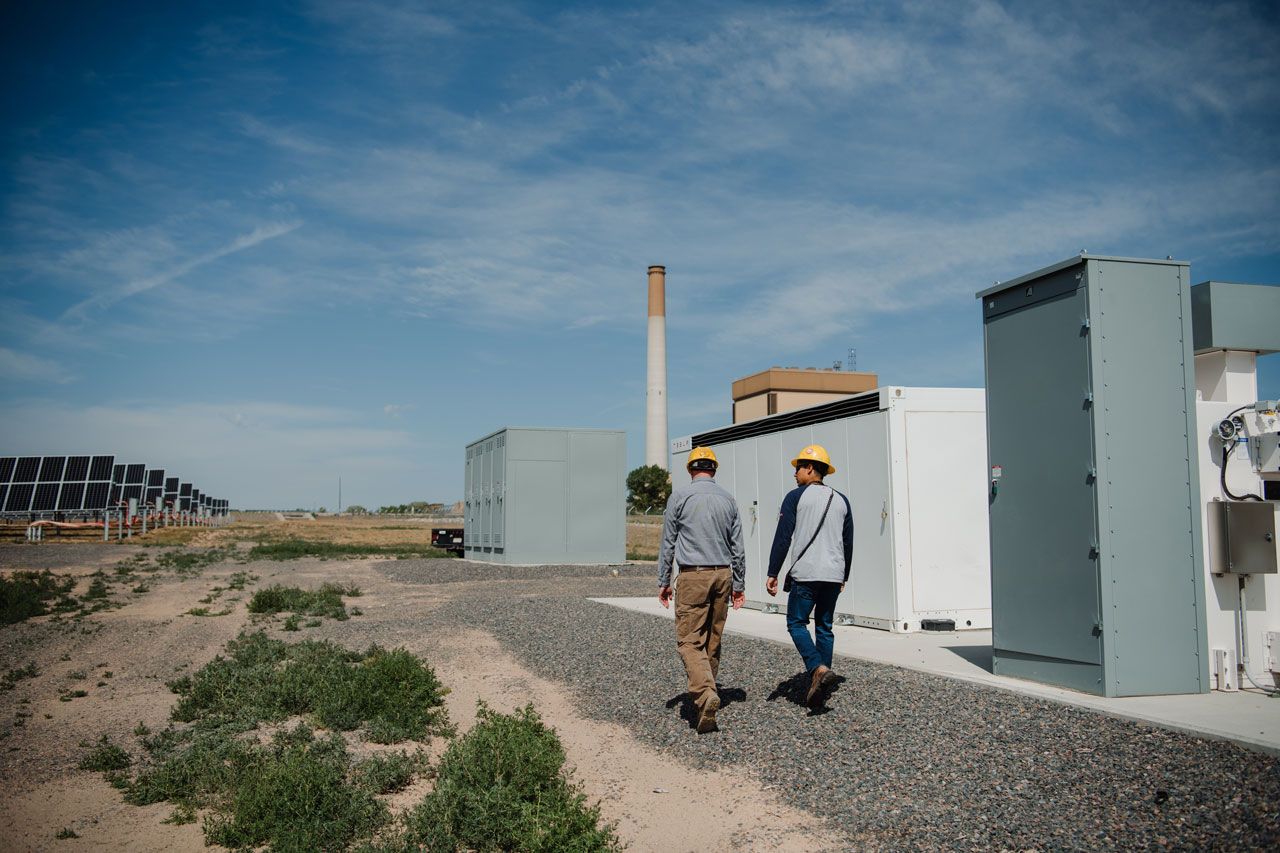New consortium brings wind experts
You may not need a weatherman to know which way the wind blows, but if you’re thinking about building a wind farm, you’ll probably need a team of consultants to sort out the finer details.
Every wind-energy development must consider site design and the spacing, height and orientation of wind turbines and towers; power potential, purchase contracts and transmission connections; noise mitigation and bird collisions, among various other environmental concerns; and myriad regulatory and financial challenges, any of which can delay or derail an enterprise. The list is as dizzying as watching turbine blades spin on a gusty afternoon.
SPONSORED CONTENT
How dispatchable resources enable the clean energy transition
Platte River must prepare for the retirement of 431 megawatts (MW) of dispatchable, coal-fired generation by the end of the decade and address more frequent extreme weather events that can bring dark calms (periods when there is no sun or wind).
Nationally, wind energy produces just 2 percent of the country’s electricity, with a government goal to reach 6 percent by 2020. But a study by the federal government’s Battelle Pacific Northwest Laboratory says wind energy could provide up to 20 percent of U.S. electricity. Wind and other renewables aren’t yet hitting such lofty projections, partly because they are relatively young industries and potential developers may bring more expectations than expertise to a project.
“There’s a lot of interest in wind energy out there, but there’s also a lot of constraints,” according to Brad Cochran, senior associate with the Fort Collins-based wind-engineering firm CPP.
CPP has been in the field of wind-energy resources for half a century – its president emeritus, Jack Cermak, who began his career at Colorado State University, is known as “the father of wind engineering.” So the company and its staff know a few things about the physical and logistical challenges of developing wind industry. In early 2009, when Cochran began meeting with representatives from other local companies with interests in the wind industry, the group decided to pool their services to facilitate wind development for clients.
The alliance, now working as the Rocky Mountain Wind Consortium, brings together seven companies that each specialize in different elements of renewable-energy development – surveying, engineering, construction, permitting, financing, legal, and more – to guide wind developers from conception to completion. Consider it the dream team of wind-energy consulting.
Multiplying abilities
“Nobody else (in the wind-energy industry) is doing this in this fashion,´ said Tom Marnik, principal with civil-engineering firm Lamp Rynearson & Associates, and one of the consortium leaders. “We’re taking our marketing abilities and multiplying them by seven and beyond that.”
The consortium doesn’t represent a formal corporation or LLP, and clients that approach one company aren’t, by any means, required to use the services of other member firms. If several companies are consulting on a project, one business serves as the point contact and the others work as subcontractors, Marnik explained, which keeps things simple for clients.
But since wind developers vary from international energy providers to local farmers’ cooperatives with prime land for turbines, the consortium allows clients to either tap into a few select specialists for particular phases or form a start-to-finish consulting partnership.
“There’s no typical development of wind energy,” Marnik said. “It’s just so diverse out there.”
As an industry built around wide, open, sparsely populated spaces, there is a general challenge to connect mostly isolated wind-farm sites with potential power buyers and cities. In between the two are all those political and geographical barriers. Issues can arise over zoning, water-quality permits, wetlands delineation, road construction and right-of-way acquisition, substation and transmission access, and all sorts of subsequent mitigation measures.
And considering that every element of planning and development impacts project efficiency and output, which ultimately translates to cents on the kilowatt-hour and whether a project can attract investors and turn a profit, it’s a lot of ground to cover without a guide.
So whether a developer needs all the help he can get, or some assistance on certain tasks, the Rocky Mountain Wind Consortium hopes clients will turn to its network of firms.
“It gives us an opportunity to provide our clients with more of a one-stop shop,” Cochran said.
Of course, as the network helps its member companies drum up business for themselves, it’s also possible that the cooperative experiment can promote Northern Colorado’s growth as a center for renewable-energy development. Colorado is presently sixth among states in terms of installed wind-energy and ranks 11th among states for wind-power potential, and the region already has a progressive reputation when it comes to renewable energy, Marnik said. But if the wind consortium facilitates wind-energy projects with the strength of multiple powerhouse companies, it could provide a significant competitive advantage for Northern Colorado.
You may not need a weatherman to know which way the wind blows, but if you’re thinking about building a wind farm, you’ll probably need a team of consultants to sort out the finer details.
Every wind-energy development must consider site design and the spacing, height and orientation of wind turbines and towers; power potential, purchase contracts and transmission connections; noise mitigation and bird collisions, among various other environmental concerns; and myriad regulatory and financial challenges, any of which can delay or derail an enterprise. The list is as dizzying as watching turbine blades spin on a…
THIS ARTICLE IS FOR SUBSCRIBERS ONLY
Continue reading for less than $3 per week!
Get a month of award-winning local business news, trends and insights
Access award-winning content today!

